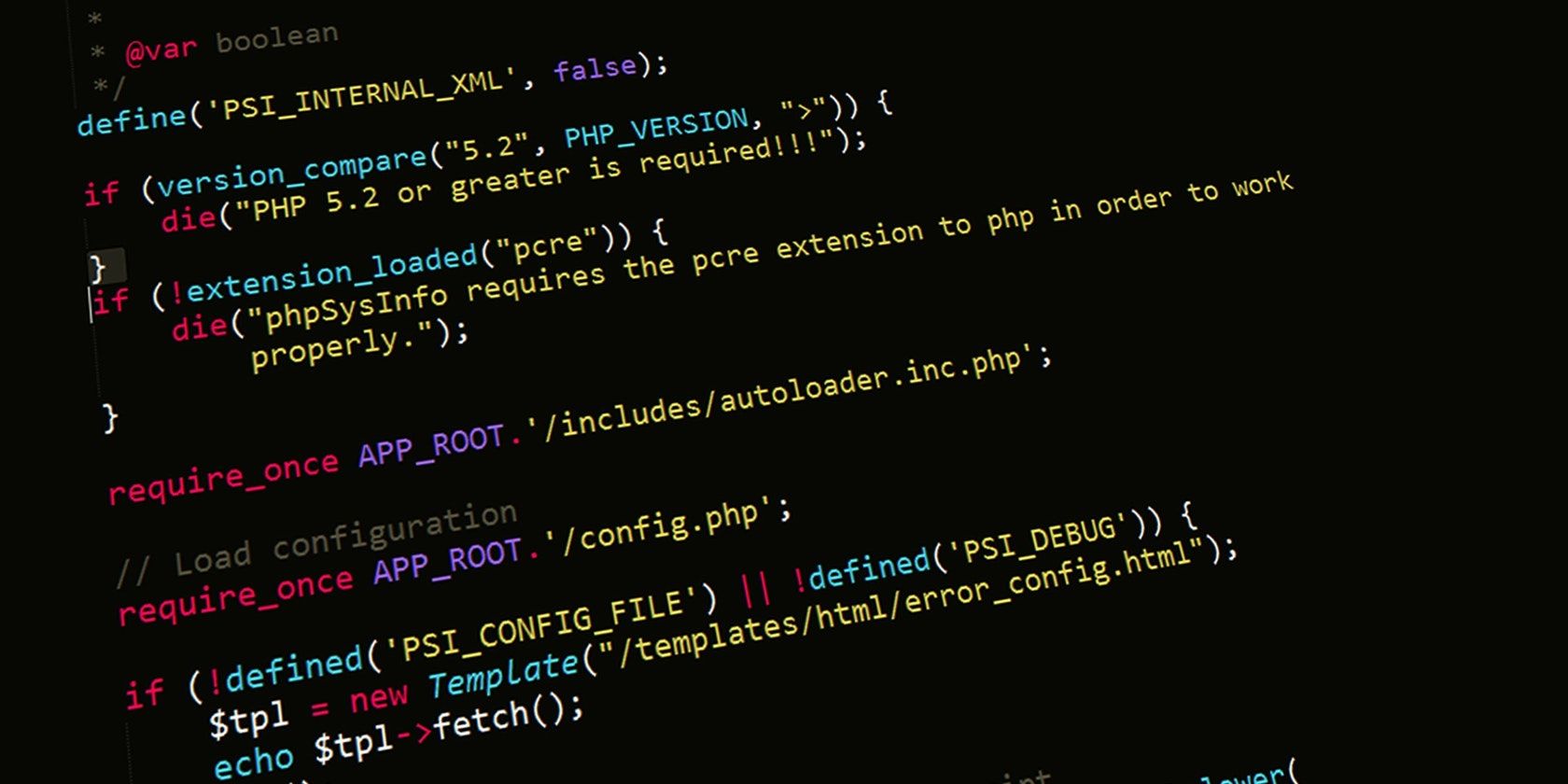Full-stack developers are highly skilled programmers who have the skills to work on both the front and back ends of web applications. Given their versatility, full-stack developers are in high demand, making this a lucrative field to venture into. If you are considering becoming a full-stack developer, we'll walk you through the essential skills you need to learn.
To get started, we'll be looking at the skills required to master the front-end side of programming, and then we'll look at the skills required for the back-end side of things.
Front-end development centers around the look and superficial behavior of websites and applications. We'll be looking at the languages that are used to create and manage these effects.
1. HTML
Hypertext Markup Language (HTML) is used to create the structure of web pages, and to tell browsers how to display their elements.
Virtually every other language used in web development integrates with HTML in some way, which is why HTML can be considered a key pillar of all web development.
Fortunately, understanding HTML is relatively easy compared to many core programming languages.
2. CSS
Cascading Style Sheets (CSS) is a styling language used to create or modify the appearance of HTML elements. HTML and CSS must be used in concert---while HTML determines the structure of the website, CSS is used to manage the styling and visual elements such as fonts, colors, and so on. Like HTML, CSS is fairly easy to learn.
3. Javascript
Javascript is an object-oriented language mostly used to add dynamic behavior to HTML elements. One very common example of this would be animated sliders.
Apart from this, Javascript is one of the most widely used programming languages used for writing both client-side and server-side development.
To excel at Javascript, you'll need to have some knowledge of the numerous javascript frameworks and libraries like ReactJs, JQuery, Vue, and so on. Speaking of which...
4. ReactJS and JQuery
ReactJS is one of the major Javascript open-source frameworks that can be used to build user interfaces. It is important to full-stack developers because, among other benefits, it allows for the reuse of components which means you don't need to write all your code from scratch.
Similarly, you will need to become familiar with JQuery, another javascript library. While ReactJS and JQuery can be used to achieve the same effects, they do so in different ways and a good full-stack developer must know which to use to achieve the best results in different cases.
5. PHP
PHP is one of the most popular programming languages for backend development. It is an open-source, cross-platform language that integrates seamlessly with different operating systems. PHP works closely with the MySQL database, is lightweight, and does not consume much server resources in rendering pages.
Compared to other programming languages, PHP will take some time and effort to master. But once you do, the benefits are huge---and you can expect your skills to be in demand.
6. SQL
SQL is a programming language majorly used for organizing and extracting data in a relational database system. In plain English, full-stack developers use SQL to make backend elements like the server and database communicate with each other, and is also used to create rules for storing, modifying, and retrieving server data.
7. Python
Python is a programming language with a range of capabilities such as developing applications and websites, automating tasks, and data analysis. While there are other languages that can be used to do most of the various things that Python is used for, few languages provide the same level of multi-functionality, making Python a useful language for full-stack developers to master. Additionally, compared to many other backend languages, Python has a reputation for being easy to learn.
8.Java
Java is a robust multipurpose programming language that can be used for mobile, desktop, and web application development. Java also has a vast collection of frameworks that help to simplify backend development. To clear up a common misconception, Java is not connected with JavaScript.
The skills we have now covered are the foundation of full-stack development but there is a little more to learn to become truly proficient.
9. Git and Github
Git is a popular open-source version control system used to track changes made in a set of files. It uses a web-based interactive interface that makes it possible for multiple persons to modify files simultaneously without hiccups.
Github also serves as a sort of portfolio because it can be used as a repository where a developers’ project source code can be stored and easily shown off to a prospective employer.
11. Web Architecture
Web architecture encompasses the planning and design of the structure of websites (it can also refer to the conceptual structure of the worldwide web itself). Full-stack developers need to be proficient at web architecture in order to develop server-side structures that will seamlessly integrate with the client side.
12. HTTP and REST
HyperText Transfer Protocol (HTTP), is a protocol used to facilitate server-client communication such as the loading of web pages. Given its vital role in connecting the server-side where much of the backend work is focused, and the client-side where much the front-end work is focused, full-stack developers need to be adept at HTTP.
Representational State Transfer (REST) similarly serves as an interface between the client-side and server-side. For the same reasons as above, full-stack developers need to master REST.
Get Started on Your Journey to Becoming a Full-Stack Developer
While there are many more areas of knowledge to master on the way to becoming a full-stack developer, mastering these 12 will set you off on the right path.
One of the best things about taking the step to become a full-stack developer is that you don't even need to go to college to get these skills.
There is an abundance of online resources and learning places that will provide you with the skills that you need to master these areas of programming, ranging from courses to YouTube videos and articles.



